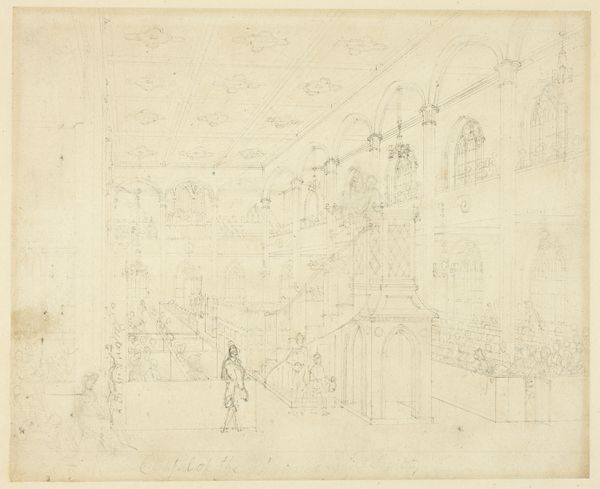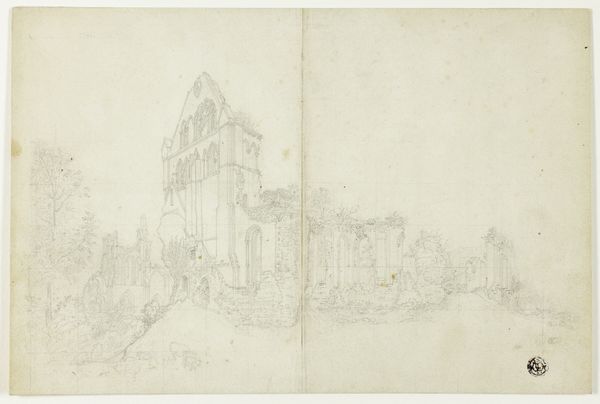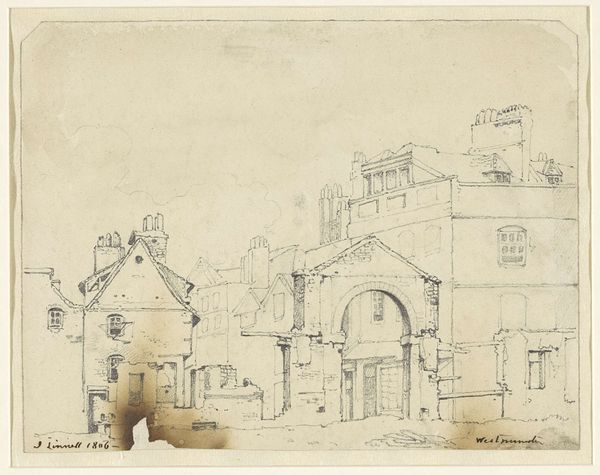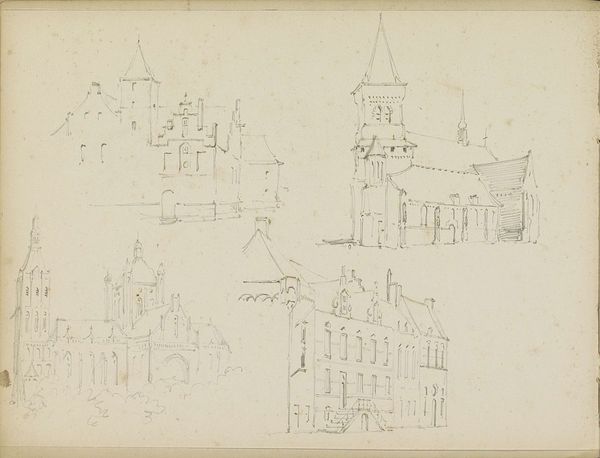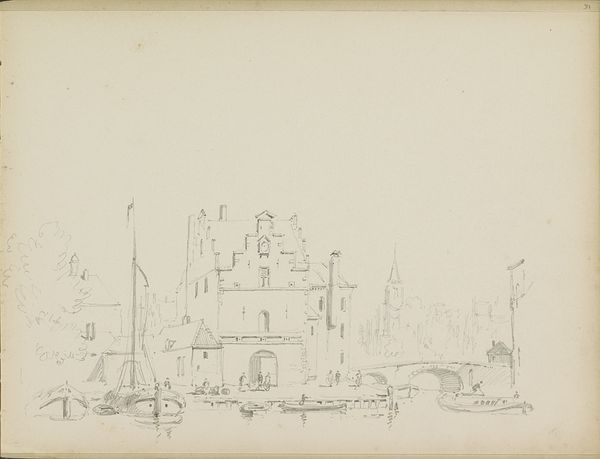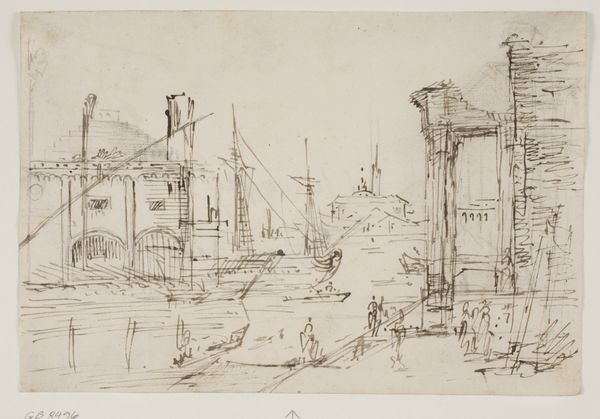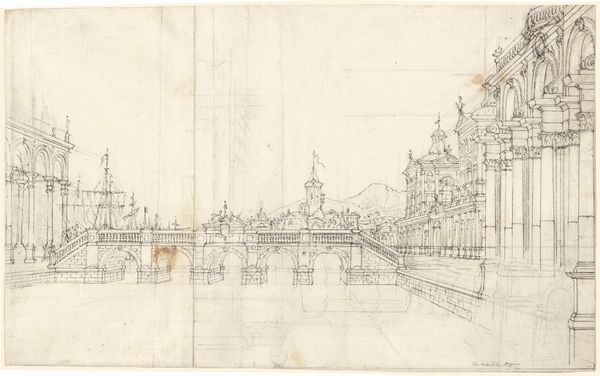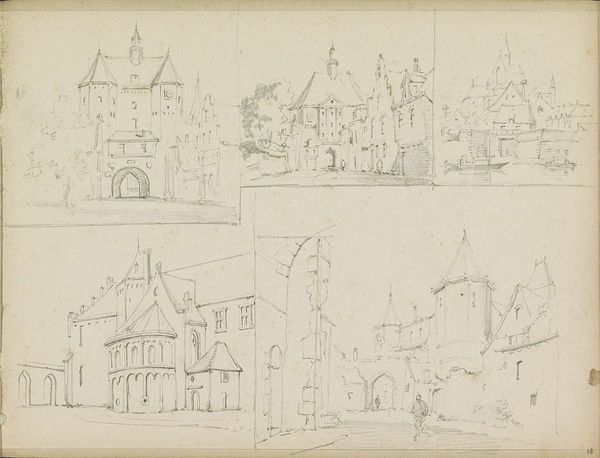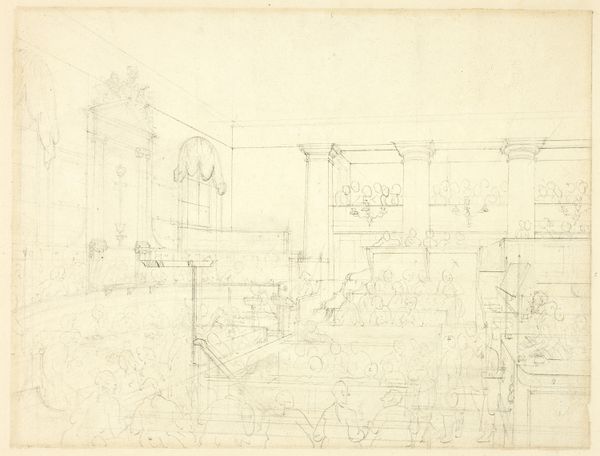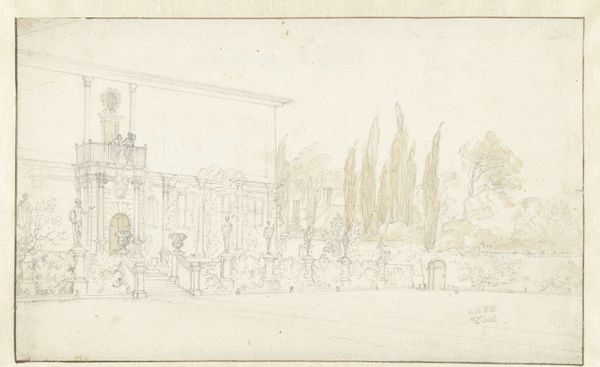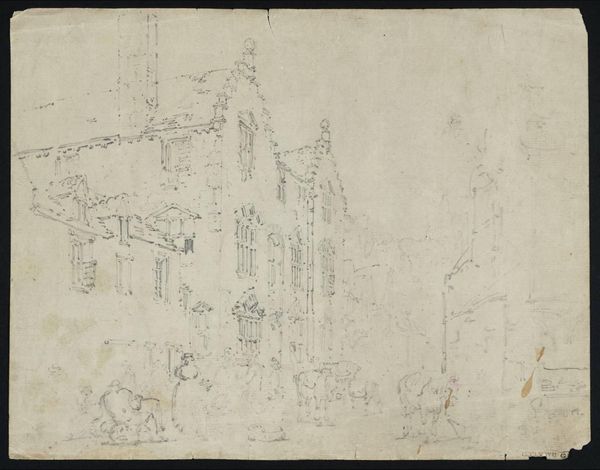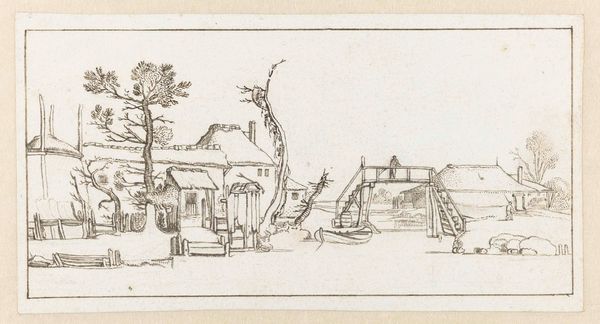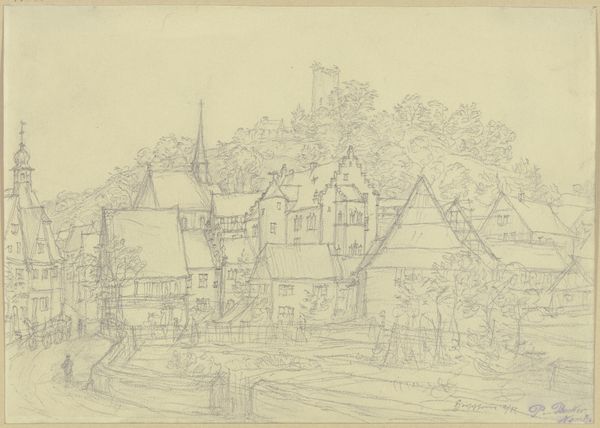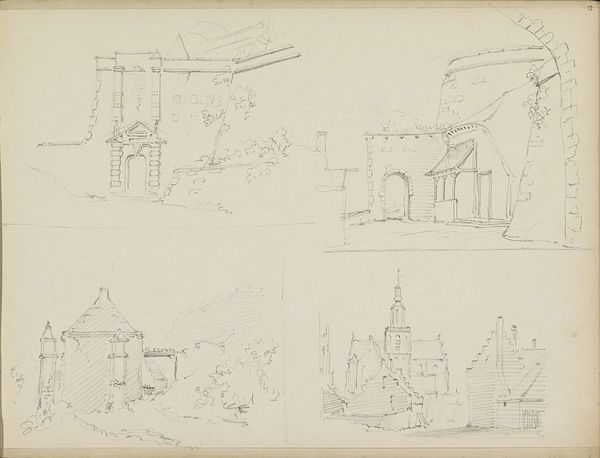
drawing, etching, ink
#
drawing
#
dutch-golden-age
#
etching
#
landscape
#
etching
#
ink
#
cityscape
#
realism
Dimensions: height 354 mm, width 497 mm
Copyright: Rijks Museum: Open Domain
Editor: This etching by Jan Hendrik Verheijen, called *A Canal in a City,* looks like it was created sometime between 1788 and 1846 using ink. The scene is incredibly detailed and precise, yet there’s something dreamlike about the whole composition due to the muted tones. What symbols do you see at play here, giving it this mood? Curator: It’s intriguing, isn't it? Water, of course, frequently stands for the unconscious, a flowing, changeable essence of life. Look at how Verheijen positions the viewer – not *on* the street exactly, but adjacent, allowing our eye to meander as easily as the canal water flows. See how figures on foot, on boats, along with the static architecture combine into a symbol of society's fabric in that period. Does it evoke any particular societal concepts? Editor: It does strike me as very ordered. Maybe the architecture and the canal suggest civic pride and organization? I mean, the buildings are quite prominent. Curator: Exactly. Buildings can be seen as structures, not only in the literal sense but also in how society builds its moral and ethical "house". These architectural shapes communicate ambition, history, memory… consider how such details spoke to viewers then, affirming societal values and expectations. But what about the ephemeral elements—water, figures in transit? Editor: Right! The impermanence introduces this whole other level. The water’s movement reminds me that things are never truly stable; maybe Verheijen captured the quiet tension between stability and change? Curator: Precisely. That tension—the fixed and the fluid—encapsulates a wider story. By presenting daily life through symbolic suggestion, he has immortalized fleeting moments within solid, iconic structures. This intersection truly lets you observe what 18th century city life may have represented. Does observing this tension cause you to interpret this image differently than at first glance? Editor: It really does! At first, I saw only a charming cityscape, but seeing it as a dialogue between permanence and impermanence gives it a whole new layer of depth. I didn't think about cityscapes holding so much potential cultural relevance. Curator: Visual symbols carry potent emotional and historical information. Recognizing these expands one's historical awareness. It also shows how the past constantly impacts present times.
Comments
No comments
Be the first to comment and join the conversation on the ultimate creative platform.
